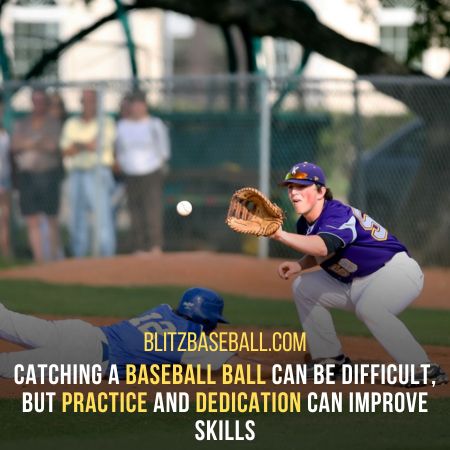Catcher, a pivotal position in baseball, demands a unique combination of physical attributes, skills, and qualities. This article provides a comprehensive guide on how to play catcher in baseball.
Excelling in batting, baserunning, and pitch framing is essential, while qualities such as supervision, communication, work ethic, and quick decision-making play a crucial role.
Catchers must observe and anticipate all circumstances on the field, providing instructions to their team with effective communication skills. They must possess a strong work ethic and the ability to make rapid decisions, especially when dealing with base runners.
Teaching catching involves various steps, including juggling balls, practicing with gloves on and off, and mastering the art of catching high pop-ups.
Catchers must also understand pitchers, block and stop the ball, and act as the point person on the field.
Patience, practice, physical fitness, and stamina are prerequisites for this position, as good catchers are indispensable for a successful baseball team.
Through training and dedicated practice, catchers can develop the skills necessary to play a position like a professional.
Key Takeaways
- Training and practice are essential for becoming a successful catcher
- Catchers must have qualities such as supervision, communication, understanding of work ethic, and quick decision making
- Catching a baseball ball can be difficult, but practice and dedication can improve skills
- Catchers are the leaders of the defense on the field and are crucial for a winning baseball team
Overview: How To Play Catcher In Baseball?
Playing catcher in baseball requires a combination of physical skills, such as batting and baserunning, as well as qualities like communication, quick decision-making, and a strong work ethic.

Catchers must possess the ability to observe all circumstances on the field and provide instructions to their team.
One common mistake in the catching technique is attacking the ball instead of receiving it softly. Dropping the ball on a third strike can result in the batter becoming a runner.
To improve communication skills as a catcher, strategies such as clear and concise verbal instructions and non-verbal signals can be employed.
Catchers must also anticipate pitches and effectively communicate with their teammates to ensure proper defensive positioning.
Developing these skills and avoiding common mistakes is essential for becoming a successful catcher in baseball.
Skills and Responsibilities
The skills and responsibilities of the catcher position in baseball include understanding the pitcher, effectively blocking and stopping the ball, and assuming the role of the team’s leader on the field.
Catchers must possess excellent communication strategies to interact with their teammates and anticipate pitches. They need to be able to effectively convey instructions and observations to their teammates, ensuring that everyone is on the same page.
Additionally, catchers can improve their pitch-framing skills through various techniques. They can work on their positioning and glove presentation to subtly manipulate the umpire’s perception of the pitch, increasing the likelihood of favorable calls.
Catchers must constantly refine and hone these skills through practice and repetition to excel in their role as the team’s catchers.

Training and Practice
Training and practice are essential components for developing the necessary physical attributes and skills required for the catcher position in baseball.
Catchers must be equipped with the right gear and equipment to ensure their safety and effectiveness on the field. Some essential gear includes a catcher’s mitt, chest protector, shin guards, and a helmet.
These items provide protection and aid in the catcher’s ability to receive and block pitches. In addition to proper gear, catchers engage in special drills and exercises to enhance their skills.
These drills focus on various aspects such as footwork, blocking techniques, throwing accuracy, and pitch framing. Footwork drills improve agility and quickness while blocking drills strengthen the catcher’s ability to stop balls in the dirt.
Throwing accuracy drills enhance the catcher’s ability to make accurate throws to different bases, and pitch framing exercises refine the skill of receiving pitches with precision.
Through consistent training and practice, catchers can develop the physical attributes and skills necessary to excel in their position.
| Catcher Gear and Equipment | Catcher Drills and Exercises |
|---|---|
| Catcher’s mitt | Footwork drills |
| Chest protector | Blocking techniques |
| Shin guards | Throwing accuracy |
| Helmet | Pitch framing exercises |

Physical Demands and Challenges
The physical demands and challenges associated with the position of catcher in baseball require high endurance, strength, and agility. Catchers must be prepared to squat for long periods of time, putting significant pressure on their thighs.
Additionally, they must possess the speed and stamina to sprint to the backstop to catch pitches thrown over their heads. To meet these demands, catchers must be among the quickest and most physically fit players on the team.
Regarding equipment, catchers wear protective gear including a helmet, chest protector, and shin guards to safeguard themselves from potential injuries. Catching techniques involve softening the impact of the ball and receiving it rather than attacking it.
Dropping the ball on a third strike can result in the batter becoming a runner, underscoring the importance of precise catching skills. Overall, the physical demands and challenges of playing catcher in baseball require players to be well-prepared both physically and mentally.
